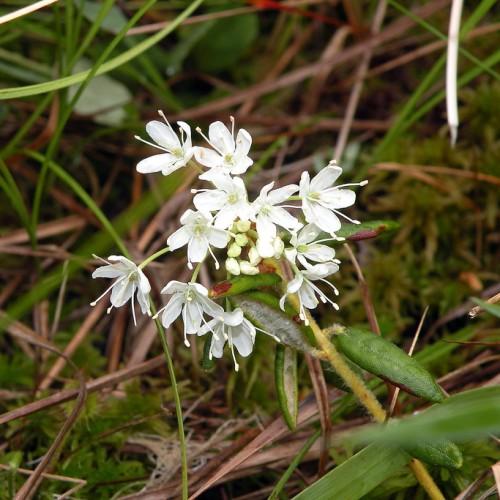
Labrador tea
Rhododendron groenlandicum
Cycle:
Perennial
Watering:
Frequent
Hardiness Zone:
3
Flowers:
Flowers In Spring
Sun:
Filtered shade, Full sun, Part sun/part shade
Soil:
Bog
Fruits:
Fruits In Autumn Ready In Fall
Leaf:
Yes
Growth Rate:
Moderate
Drought Tolerant:
Yes
Salt Tolerant:
Yes
Invasive:
Yes
Care Level:
Medium
watering
Labrador tea should be watered once a week, using lukewarm water. Aim for the soil to be kept evenly moist but not wet or soggy. During dry periods during the late Spring and Summer months, you may need to increase watering to twice a week. To ensure that the plant is receiving an adequate amount of water, probe the soil's moisture levels before adding more. If the soil feels dry about an inch or 2 below the surface, it's time to water.
sunlight
Labrador tea (Rhododendron groenlandicum) thrives in partial to full sun and partial to full shade. In climates with moderate winters, Labrador tea typically grows in full sun with supplemental shade in the summer. This species of plant prefers cooler temperatures, so it should be planted in areas that are partially shaded in the summer months to avoid midday heat and avoid extreme temperatures. This plant should receive around 4-6 hours of direct sunlight per day for the best growth. It should also be noted that too much sunlight can cause leaf burn. To avoid this, it is best to keep the plant in partial to full shade during the hottest times of the day when temperatures rise.
pruning
Labrador tea should be pruned during late spring, preferably in May or early June. Pruning should involve selectively removing dead branches and twigs, removing suckers, and shaping the plant. If the Labrador tea has become too tall or lanky, it can be pruned more substantially, however, take care to avoid cutting away too many healthy branches and leave some height on the plant for winter pest protection. Generally, pruning should be minimal and done judiciously to ensure the health and vigor of the plant. It is not recommended to prune Labrador tea too aggressively.
